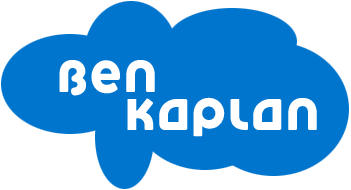Recently I’ve converted a bunch of clients over to Google Apps. Usually, they came to me saying, “Hey so-and-so said that I should use Google Apps for my business. Can you tell me why I should bother?”
At first, I didn’t have a real clear answer. I figured, well, they already have email, they already can use Dropbox or some such system for file sharing, and they likely are already using either their gmail or yahoo calendars to manage stuff.
Well, that little voice in the back of my head that represents the operations manager in me said, well, there’s got to be a reason this system exists, eh? Figure it out dumbass…
Ok, well, here’s an attempt at explaining it to the masses.
Why Google Apps for businesses?
As a small business owners, we find ourselves in need of various systems to run our businesses, right? When we had that previous ‘corporate’ job, there was The email, The file server, The shared calendaring system that allowed us ants to communicate in some sort of coordinated effort. Plus the IT department/guy/dude/gal, what have you that helped you out…ALL the time.
Well, why not have that for our own business? I’ll tell you why, it’ll cost you 1/2 a million dollars to do what the corporate world did for you. You got that kinda cash around? Not me.
I’ve been poking around with my own email on my own server, using Dropbox or YouSendit to share files with, and a calendar…that’s what iCal is for right? Now that I’ve got team members, there is a gap. I can’t really share my calendar effectively, nor give them email that’s easy to get to and install on whatever system they are working on.
So, steps in Google apps. GA allows you to create a team environment in the cloud, where you can manage company emails, documents, and calendaring. Here are some of the benefits to all these aspects of google apps for your business. If you have ten or less users, then it’s free! Otherwise, it’s $50/person/year, which is pretty reasonable considering the actual costs of a system like this.
Email
- One Interface. All your company emails are managed from one admin interface. From this main administration window, you, as the company owner, have complete control over the users on your team, as well as what email addresses they can interface with.
- Multiple Emails. If you have multiple email addresses on multiple domains, you can gain access to them all by logging into gmail, or using desktop software such as Outlook, Apple Mail, or what ever you are using. The gmail interface really gives you the most features. Your main gmail account allows you to send and receive from all the multiple email addresses you might have, as well as create sophisticated filtering/labelling system to reduce the amount of emails that hit your inbox, thereby saving you some time every day.
- Labeling. You might think that most email systems allow you to create folders to store your emails, and have filters, etc… Most do. The difference is gmail does it with labels. Rather than have actual ‘folders’, you have labels. You can assign more than one label to an email, thereby putting the email in multiple ‘folders’ without actually making duplicate emails…sound like a good idea?
- Branding. By having your staff utilize the branded emails, your online presence, via your staff, will be more cohesive.
- Accountability. You can always log in and review the communications that are sent on your company’s behalf. While looking at someone else’s email seems like an ethical no-no, as a business owner, you sometimes need to see what sort of interactions your employee/contractor is having on your behalf.
- Reliability. Google servers are incredibly reliable. You won’t have to worry about servers going down. Also, if you use the web based interface, you’ll never have issues sending or receiving emails from any computer, or while traveling.
Documents
- Central Repository. Google Docs is a great repository for shared documentation. You can create and share word like documents, spreadsheets, power point like presentations, drawings, and even web based forms. If you and one of your team members were to look at the same document at the same time, you will both see the actions and movements each other are making…aka real time sharing. Neat stuff!
- External file storage. You can also upload your own files to the server, though there is a cap on the amount of free storage. However, it’s a great place to store important documents that you can access from anywhere.
- Google Drive (updated July 1, 2012) – Google Docs has been turned into Google Drive. This is a vast improvement on Google Docs. It adds the ability to more effectively store non-google docs files on the server. Plus, it adds the ability to selectively sync files with your desktop, much like Drop Box. That’s a HUGE plus in my humble opinion.
Calendaring
- Robust Calendar. I’m sure you may be familiar with google calendar already. It’s really the same for google apps, just that you have more sharing features with your team members. You can specify which team members can see, or see AND edit your calendar. Also, if you currently are using a personal gmail for calendaring, it can quickly and easily be imported into your new google apps account.
- Super compatibility. If you’ve never hooked up your desktop/mobile calendar with a google calendar, you are missing out. It’s compatible with most, if not all systems out there.
There’s other cool stuff too. You can manage your Google Analytics/Places/Plus accounts from this main account.
— end
Well there you have it. Google Apps for the masses.
